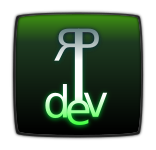Back in Time 1.1 and Touchégg for Fedora
We recently created two repositories for Fedora via Copr. These repositories can easily be added to your Fedora installation to enhance your user experience. Interested? Then read on what’s in for you.
Touchégg for improved multi-touch gestures
The touchpad (and touch screen) drivers coming with Fedora already provide some type of multi-touch support. You might already be quite familiar with two finger scrolling or tapping with three fingers to emulate e.g. a middle mouse button click. However, when you compare this to what is currently available in e.g. Mac OS X, you’ll notice there’s still a huge gap. On Mac OS X, you can switch between virtual desktops or show an app expose. The fedora-multitouch repository we created allows you to get a very similar user experience. It provides touchégg, a multi-touch gesture recognizer as well as touchegg-gce, a graphical user interface to configure touchégg. In addition, the repository provides a set of prerequisites required in order to run the mentioned tools and which are not part of the standard Fedora repositories. Installing these tools allows you to define multi-touch gestures and bind them to different actions, such as drag’n’drop, showing your desktop or (probably the most interesting option) sending key sequences to applications or your desktop, which can be used to create e.g. gestures for switching between virtual desktops.
Continue reading on the repository’s project page…
Updated Back in Time packages
Back in Time (BiT) is a very simple to use backup tool for Linux. You can use it to create incremental backups, very similar e.g. to TimeVault. Our backintime Copr repository provides more recent versions of BiT for your Fedora installation. Currently, Fedora still provides version 1.0.x versions of BiT. The current development branch has reached 1.1.x meanwhile, and a lot happened. The split GNOME/KDE GUIs are gone. Instead, there’s now a unified Qt4 based UI. Furthermore, there are - of course - a lot of fixes, which make it worth to update to 1.1.x (unless you want to stick to the specific KDE or GNOME versions e.g. for better integration).
